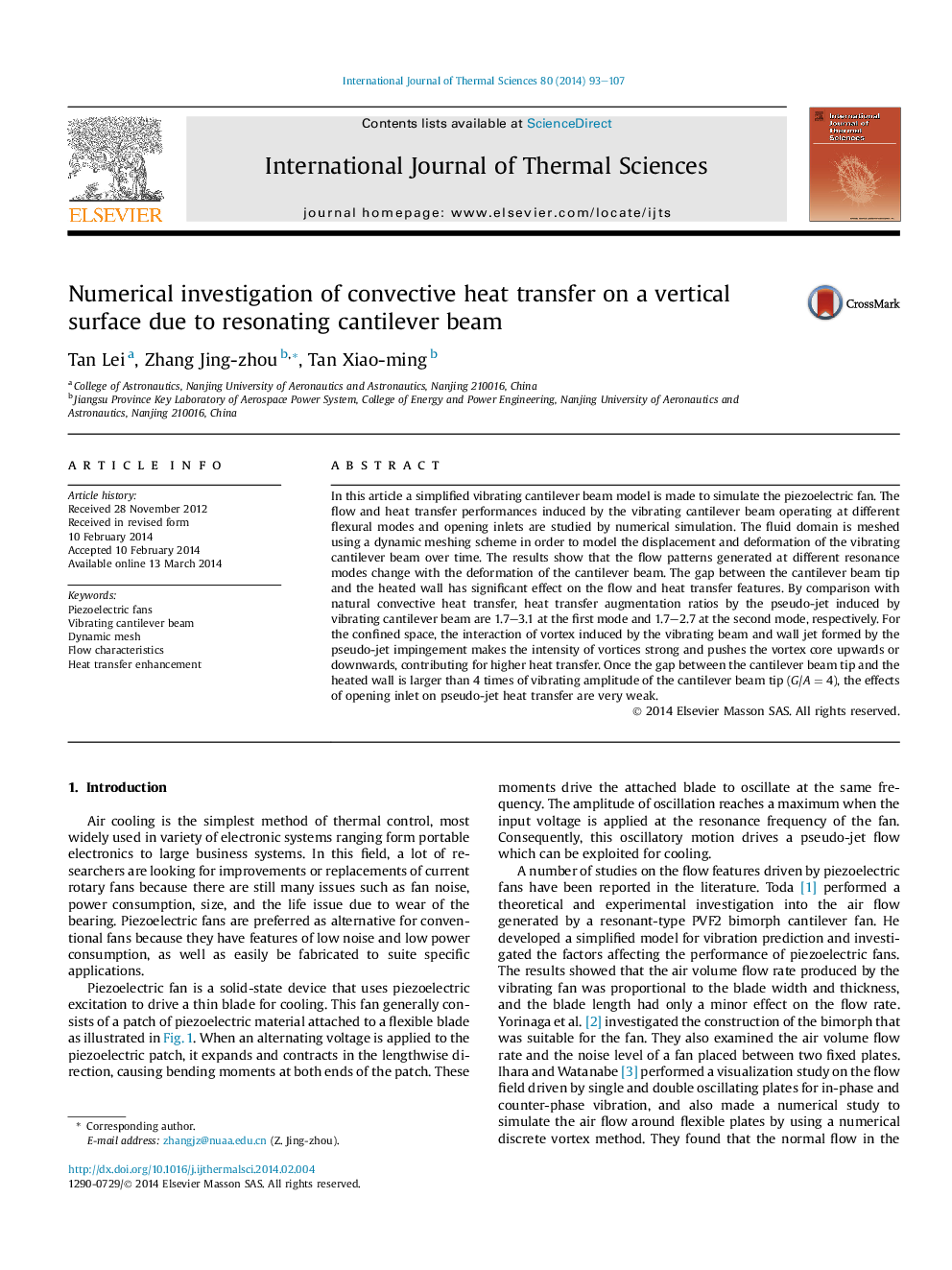| Article ID | Journal | Published Year | Pages | File Type |
|---|---|---|---|---|
| 668742 | International Journal of Thermal Sciences | 2014 | 15 Pages |
Abstract
In this article a simplified vibrating cantilever beam model is made to simulate the piezoelectric fan. The flow and heat transfer performances induced by the vibrating cantilever beam operating at different flexural modes and opening inlets are studied by numerical simulation. The fluid domain is meshed using a dynamic meshing scheme in order to model the displacement and deformation of the vibrating cantilever beam over time. The results show that the flow patterns generated at different resonance modes change with the deformation of the cantilever beam. The gap between the cantilever beam tip and the heated wall has significant effect on the flow and heat transfer features. By comparison with natural convective heat transfer, heat transfer augmentation ratios by the pseudo-jet induced by vibrating cantilever beam are 1.7-3.1 at the first mode and 1.7-2.7 at the second mode, respectively. For the confined space, the interaction of vortex induced by the vibrating beam and wall jet formed by the pseudo-jet impingement makes the intensity of vortices strong and pushes the vortex core upwards or downwards, contributing for higher heat transfer. Once the gap between the cantilever beam tip and the heated wall is larger than 4 times of vibrating amplitude of the cantilever beam tip (G/AÂ =Â 4), the effects of opening inlet on pseudo-jet heat transfer are very weak.
Related Topics
Physical Sciences and Engineering
Chemical Engineering
Fluid Flow and Transfer Processes
Authors
Tan Lei, Zhang Jing-zhou, Tan Xiao-ming,
